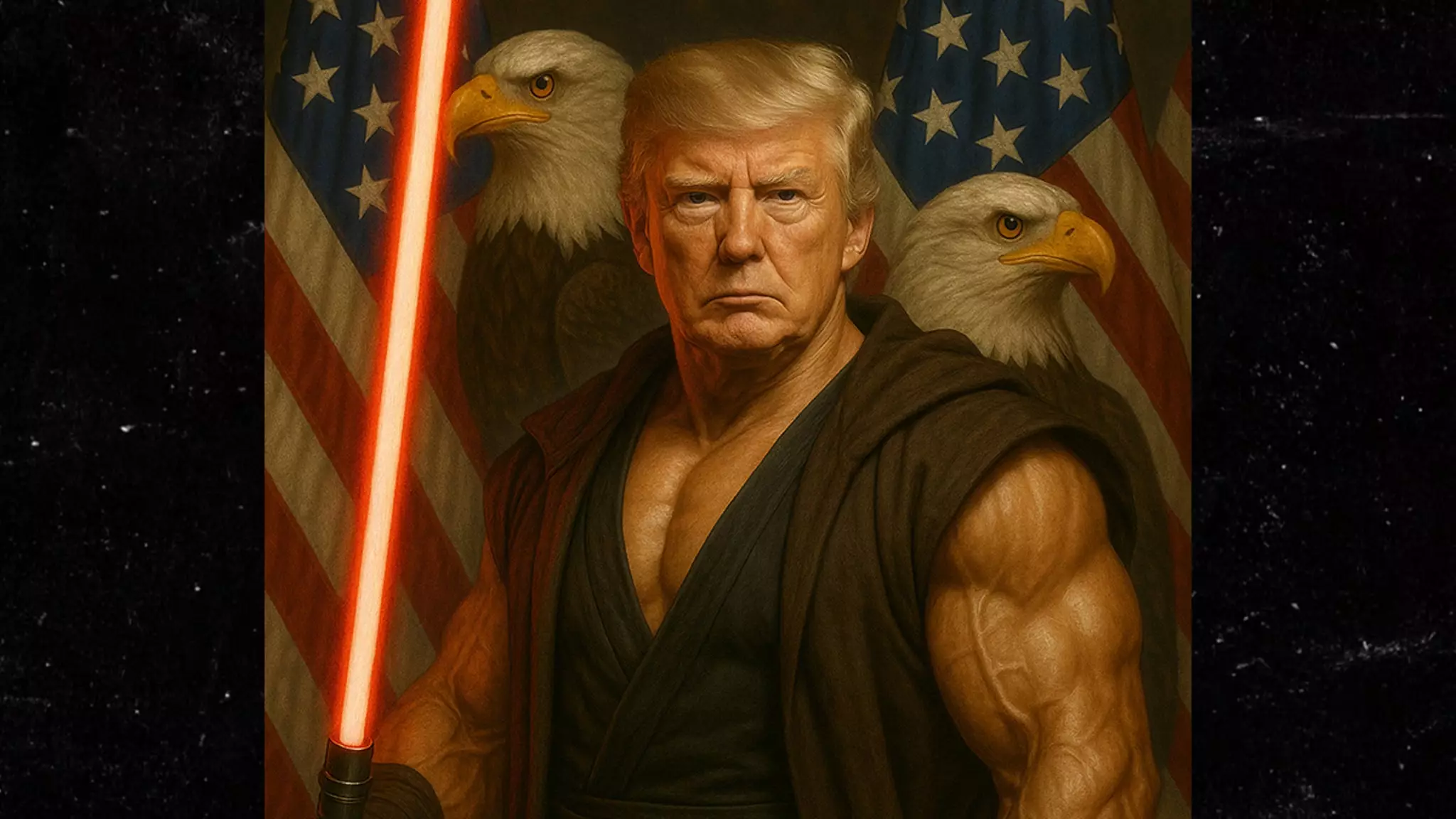In the current socio-political climate, imagery holds more power than ever. The White House recently took to the realm of pop culture—specifically, the significant cultural phenomenon of Star Wars—to convey a narrative that positions Donald Trump as a formidable figure, invoking strong associations with both power and dominance. By releasing an AI-generated image portraying Trump as a Star Wars character clad in a sleeveless cloak, brandishing a red lightsaber, the administration strategically taps into both the allure and the divisiveness of such symbolism.
The stark contrast between villain and hero in the Star Wars saga serves as a powerful metaphor, revealing the underlying tension in American politics. The immediate association of Trump with the Sith—characterized by their well-documented authoritarianism—raises pertinent questions regarding the direction of his administration and its alignment with traditional democratic values. The imagery presented, coupled with the provocative choice of colors—red representing aggression and warmth in the GOP—demands careful analysis, particularly in terms of how it resonates with his base while alienating opponents.
Symbolism and Political Identity
The decision to present Trump wielding a red lightsaber invites criticism and interpretation from both sides of the aisle. While his supporters might argue that the saber signifies strength and resilience, detractors see it as a deliberate affirmation of power at any cost, akin to Sith Lords who seek to eliminate opposition to maintain control. This complex interplay of symbolism reveals how image creation in politics is often used to reshape narratives and alter perceptions in favor of the creator’s agenda.
It’s fascinating to note the online conversations this image has sparked, particularly among those who seek to reframe the narrative. Some belonging to Trump’s loyal base have hastily attempted to reassign the color of the lightsaber from red to orange, a move that reflects a deep-seated desire to reshape ideology to fit within acceptable parameters, even if that necessitates stretching the truth. The calling out of this imagery and its interpretations demonstrates the role of online discourse in modern political warfare, where symbolism is dissected and debated in real time.
The Reaction of Cultural Icons
Furthermore, the comparison to George Lucas’s original vision of the Empire, heavily inspired by Nazi aesthetics and authoritarianism, adds an intriguing layer to the discourse. It reflects ongoing concerns about the erosion of democratic principles under the guise of nationalism. The failure of cultural figures, such as Mark Hamill, to publicly address Trump’s appropriation of such potent symbols could indicate a troubling silence in the face of misuse of cultural heritage, risking dilution of the core messages of hope and resistance associated with the Jedi.
In reflecting on this political chess game, it becomes clear that the essence of leadership and power is often curated through artful imagery and allegory. The dual nature of Trump’s portrayal as both a heroic figure and a potential Sith encourages a rich dialogue about the morality of power and the responsibilities of leadership. The ongoing debate surrounding these portrayals emphasizes the fact that popular culture and politics are inextricably linked, each shaping and reflecting the other in a continuous feedback loop of influence and interpretation.

